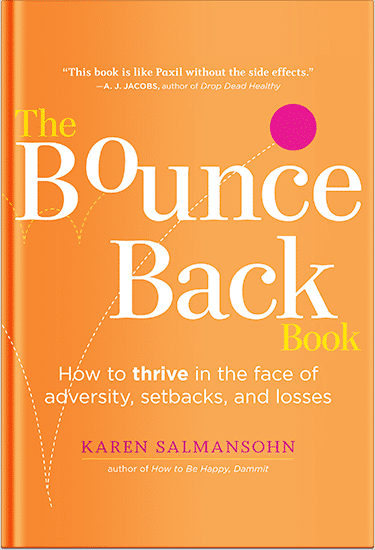 Virginia has always taken pride in its perseverance. From the Blue Ridge Mountains to the busy centers of Richmond and Virginia Beach, people here work hard to support their families, contribute to their communities, and build meaningful lives. Yet, life has a way of throwing curveballs when least expected.
Virginia has always taken pride in its perseverance. From the Blue Ridge Mountains to the busy centers of Richmond and Virginia Beach, people here work hard to support their families, contribute to their communities, and build meaningful lives. Yet, life has a way of throwing curveballs when least expected.
An illness, accident, or medical condition that limits one’s ability to work can change everything in an instant. Suddenly, bills pile up, paychecks stop coming, and families are left wondering how to make ends meet. That’s when understanding the process behind long-term disability claims becomes crucial for maintaining financial stability and achieving a sense of peace of mind.
These claims serve as a safety net, providing income replacement while individuals focus on recovery and stability. Still, navigating the steps can be overwhelming without proper guidance. A Virginia long-term disability lawyer can explain the fine print, help collect crucial documentation, and protect your rights throughout the process, which makes an otherwise daunting experience more manageable.
Understanding Long-Term Disability Insurance
Long-term disability insurance helps you financially when you are unable to work due to an injury or illness. It provides partial coverage of salary, and thus acts as an income stabilizer. Not all policies are the same, so it’s helpful to know your specific coverage.
Filing a Claim: Important First Steps
Review the specifics of your plan before filing a claim, including understanding the exact definition of disability as defined by the insurer. Collecting specific documents, such as medical records and employment history, results in a faster and more efficient process.
Notifying the Employer and Insurer
Prompt notification is essential. Notify the employer and the insurance company of the disability. This stage involves completing the insurer’s forms. These forms ask questions related to the disability and its impact on work capacity.
Completing the Application
Completing the application correctly is key. Provide detailed information about the medical condition, as well as the treatments administered. The application must demonstrate how the disability affects the applicant’s ability to perform work-related tasks daily. The more information you provide, the less potential there will be for delay.
Medical Evaluation and Documentation
The significance of medical documentation in the claims process lies in engaging professionals, which ensures up-to-date assessments and documentation. These documents establish the authenticity of the claim and evidence supporting the case.
Submitting the Claim
After documenting everything, file the claim with the insurance company. Sending the letter by certified mail or another traceable manner may be advisable. It is advisable to retain copies of all documents and correspondence for future use.
Waiting for the Decision
Once you submit the disability insurance claim, the insurer needs to review it before issuing payment to the policyholder. The duration varies depending on the nature of the claim and the insurance company’s norms. It takes some time, and the insured can always check with the insurance company for updates.
Understanding the Decision
The insurer will then notify the claimant once it reaches a decision. The letter will specify the benefits and outline when you can expect to receive the payout, if approved. The terms of the approval will clearly outline what all concerned parties must do next.
Dealing with Denial
Rejection can sting; however, do not give up. It is essential to understand why requests get denied. It entirely breaks down the areas of information required that they had not fulfilled.
Appealing a Denial
If the response is negative, you appeal, which means reviewing the denial letter closely and any relevant paperwork that may help improve the situation. You can make the appeal more effective if legal or insurance professionals handle it.
Finalizing the Appeal
The actual submission of the appeal entails responding to the reasons for denial, along with additional evidence, such as new medical opinions and test results. By preparing your appeal well, you can increase the chances of a successful outcome.
Receiving Benefits
Receiving benefits will occur if the appeal is successful in your favor. These payments provide financial support, thus enabling you to focus on your recovery. Knowing when payments are due allows for proper financial preparation.
Maintaining Eligibility
Long-term disability requires the continual maintenance of records. However, the insurer will require regular updates, including medical reports and any changes in the insured’s condition. Claimants will get continued support and uninterrupted benefits.
Conclusion
Taking it step by step and navigating a long-term disability claim properly can make the process a little less overwhelming. This knowledge will help one face the claim through understanding all the stages and incorporate confidence and clarity while doing so. Preparation is the best way to ensure that the support needed when times get tough and trouble arises is readily available.
P.S. Before you zip off to your next Internet pit stop, check out these 2 game changers below - that could dramatically upscale your life.
1. Check Out My Book On Enjoying A Well-Lived Life: It’s called "Your To Die For Life: How to Maximize Joy and Minimize Regret Before Your Time Runs Out." Think of it as your life’s manual to cranking up the volume on joy, meaning, and connection. Learn more here.
2. Life Review Therapy - What if you could get a clear picture of where you are versus where you want to be, and find out exactly why you’re not there yet? That’s what Life Review Therapy is all about.. If you’re serious about transforming your life, let’s talk. Learn more HERE.
Think happier. Think calmer.
Think about subscribing for free weekly tools here.
No SPAM, ever! Read the Privacy Policy for more information.
One last step!
Please go to your inbox and click the confirmation link we just emailed you so you can start to get your free weekly NotSalmon Happiness Tools! Plus, you’ll immediately receive a chunklette of Karen’s bestselling Bounce Back Book!


 Virginia has always taken pride in its perseverance. From the Blue Ridge Mountains to the busy centers of Richmond and Virginia Beach, people here work hard to support their families, contribute to their communities, and build meaningful lives. Yet, life has a way of throwing curveballs when least expected.
Virginia has always taken pride in its perseverance. From the Blue Ridge Mountains to the busy centers of Richmond and Virginia Beach, people here work hard to support their families, contribute to their communities, and build meaningful lives. Yet, life has a way of throwing curveballs when least expected. 